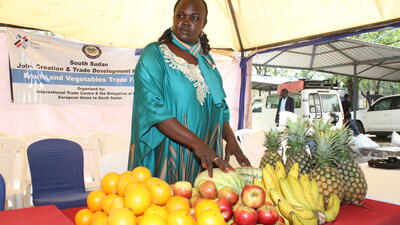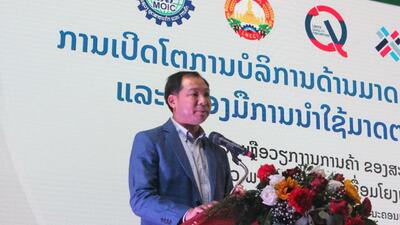Results-based management: Delivering Aid for Trade with the beneficiaries in mind
Despite the current economic crisis, there is growing evidence that trade continues to be one of the major factors enabling economic and social development. Trade-related technical assistance (TRTA) is thus as relevant as ever. However, the providers of TRTA – including ITC – are expected to demonstrate more tangible results, and beneficiaries are playing a larger role in determining the nature of the support they receive.
This leads to two main challenges. First, public money is becoming scarce, and public opinion is putting governments under more pressure to spend it on things that are useful and well managed. There will be no return to the days of providing services without considering the effects of these services. In fact, demonstrating achievements has become necessary to the survival of TRTA-providing agencies. Development agencies are no longer experts acting on their own; they need to work with and for beneficiaries in developing countries. Increasing ownership over the objectives of TRTA is becoming a major trend in recipient countries.
The second challenge is to continue providing relevant, high-quality support and productive engagement with the beneficiaries. The absorption capacity of beneficiaries is always a risk, hence the importance of supporting them in the design, implementation and evaluation of TRTA projects.
The implementation of results-based management (RBM) is part of the solution. RBM can be defined as ‘acting with the end in mind.’ In the planning phase, it ensures that stakeholders are included and that solutions address actual problems. Implementing RBM means putting the desired outcomes at the centre of the approach to designing activities (i.e. the logical framework), coordinating resources and time accordingly (i.e. the work plan) and measuring progress through objective measurements (i.e. the indicators).
During project implementation, RBM is about tracking how the project is progressing. It accommodates change if things are not going to plan, and it facilitates the demonstration of results. Information generated through the indicators must be meaningful in order to capture insights from past experiences and to enable periodic adjustments. In order to implement RBM effectively, managers require autonomy as well as the conviction that this approach can improve their work. The danger is allowing RBM to be implemented merely as a bean-counting exercise to satisfy bureaucratic requirements.
RBM indeed relies on the adherence of stakeholders to the system. Among the key success factors is the importance of leadership and establishing a culture of change through training and incentives. The cultural change brought by RBM should not be understood as an internal exercise only. It is the key to a more balanced and productive interaction with beneficiaries.
Because ITC has a limited in-country presence, trade support institutions (TSIs) play a major role in generating a multiplier effect with enterprises and decision makers at the country level. Therefore, there are considerable gains to be expected from increasing the capacity of TSIs in beneficiary countries, and in supporting country-level ownership through RBM. A strong network of allied TSIs can be empowered to implement RBM. This provides the basis for establishing joint goals and accountability, and a continual dialogue for adapting activities to the ever-evolving needs of beneficiaries. This is why training TSIs and enhancing their capacity in designing, monitoring and evaluating TRTA projects is a necessary objective in achieving RBM.
In the end, the challenges facing Aid for Trade can only be addressed by implementing RBM, thus enhancing the capacity of beneficiaries to engage.















